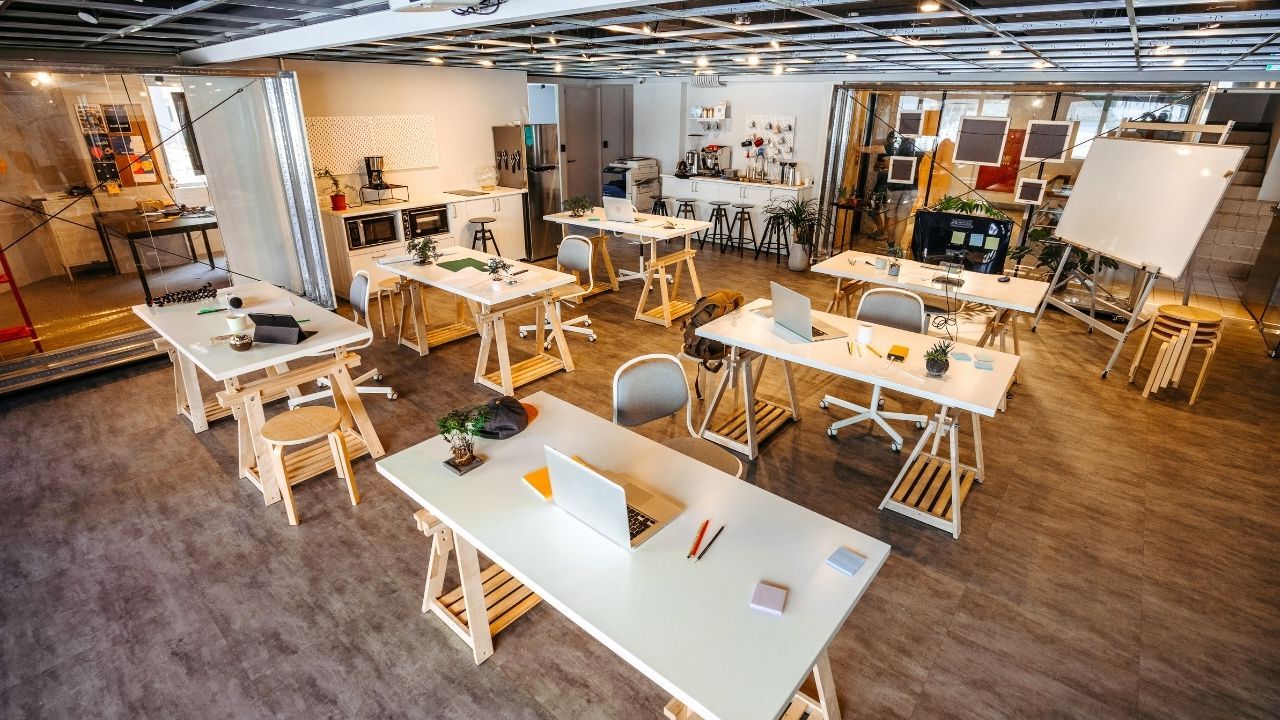
Space as a Service has transformed how we think about and utilize physical spaces. This innovative concept, blending flexibility with functionality, caters to the evolving needs of businesses and individuals alike. Imagine having the ability to access and use office spaces, meeting rooms, or even studios without the burden of long-term leases or hefty upfront costs. That's exactly what Space as a Service offers. It's a model that prioritizes convenience, adaptability, and efficiency, making it an ideal solution for startups, freelancers, and large corporations seeking to optimize their operations. With a focus on providing tailored, on-demand spaces, this approach is reshaping the landscape of commercial real estate, making professional environments more accessible and customizable than ever before.
Space as a Service (SPaaS) is transforming how businesses and individuals think about and utilize physical space. This innovative model leverages flexibility, technology, and a customer-centric approach to offer tailored space solutions. From coworking spaces to retail pop-ups, SPaaS is redefining the boundaries of traditional real estate. Let's dive into some fascinating facts about this evolving industry.
What Exactly Is Space as a Service?
Space as a Service refers to a business model where physical space is provided on a flexible basis, often enhanced by services and technology. This concept has gained traction in various sectors, including office, retail, and hospitality. It's not just about renting a desk or a room; it's about creating environments that foster collaboration, innovation, and a sense of community.
- SPaaS is often associated with coworking spaces, but it extends far beyond, including virtual offices, meeting rooms, and event spaces.
- Companies like WeWork and Industrious have popularized the coworking aspect of SPaaS, offering not just space but a network of professionals and entrepreneurs.
- The model is built on flexibility, allowing businesses and individuals to scale up or down based on their needs without the long-term commitments required by traditional leases.
The Impact of Technology on Space as a Service
Technology plays a crucial role in the SPaaS model, enabling providers to offer seamless experiences and users to customize their space usage.
- Advanced booking systems allow users to reserve spaces in real-time, ensuring they can access the facilities they need, when they need them.
- IoT (Internet of Things) integration in SPaaS environments helps in optimizing resource use, such as lighting and heating, making spaces more energy-efficient.
- Virtual reality tours and augmented reality applications provide potential users with immersive previews of spaces, aiding in their decision-making process.
Space as a Service and the Environment
Sustainability is a key consideration in the SPaaS industry, with many providers focusing on reducing their carbon footprint and promoting eco-friendly practices.
- Many SPaaS locations are designed with sustainability in mind, using materials and designs that minimize environmental impact.
- Shared resources in coworking spaces or other SPaaS facilities reduce waste and energy consumption compared to traditional office setups.
- Initiatives like green walls and solar panels are becoming more common in SPaaS locations, contributing to a healthier environment inside and out.
How Space as a Service Supports Community and Collaboration
One of the most significant benefits of SPaaS is its ability to bring together diverse groups of people, fostering a sense of community and encouraging collaboration.
- SPaaS locations often host events and workshops, providing valuable networking opportunities and fostering a sense of belonging among users.
- The design of SPaaS facilities typically emphasizes open spaces and communal areas, encouraging interaction and the exchange of ideas.
- Through SPaaS, small businesses and freelancers gain access to resources and networks that would otherwise be out of reach, leveling the playing field with larger organizations.
The Future of Space as a Service
As we look ahead, the SPaaS model is set to continue evolving, with new trends and innovations shaping its trajectory.
- The integration of artificial intelligence and machine learning technologies could further personalize the SPaaS experience, making space usage even more efficient.
- There's a growing trend towards niche SPaaS offerings, catering to specific industries or interests, such as spaces designed exclusively for artists or tech startups.
- The concept of SPaaS is expanding to include residential living spaces, blurring the lines between work and home environments.
- As urbanization increases, the demand for flexible and efficient space solutions will continue to rise, positioning SPaaS as a critical component of future cities.
- The COVID-19 pandemic has accelerated the adoption of SPaaS, as businesses seek more flexible and cost-effective alternatives to traditional office spaces.
- Finally, the global SPaaS market is expected to grow significantly, with projections suggesting it will reach billions in revenue, underscoring its potential to reshape the landscape of real estate and workspace management.
Space as a Service: A Universe of Opportunities
Space as a Service (SPaaS) isn't just another buzzword; it's reshaping how we think about and utilize physical space. From coworking environments to on-demand storage, SPaaS offers flexibility, efficiency, and innovation for businesses and individuals alike. With technology driving its expansion, the possibilities seem as vast as space itself. Companies can scale up or down without the burden of long-term leases, and individuals can access premium amenities without owning a square foot. As urban landscapes grow denser and real estate premiums soar, SPaaS stands out as a smart solution to space management challenges. Embracing this model means tapping into a world where space is not just a fixed asset but a dynamic resource that can adapt to our ever-changing needs. Let's keep our eyes on the horizon; the future of space utilization is here, and it's full of potential.
Was this page helpful?
Our commitment to delivering trustworthy and engaging content is at the heart of what we do. Each fact on our site is contributed by real users like you, bringing a wealth of diverse insights and information. To ensure the highest standards of accuracy and reliability, our dedicated editors meticulously review each submission. This process guarantees that the facts we share are not only fascinating but also credible. Trust in our commitment to quality and authenticity as you explore and learn with us.


